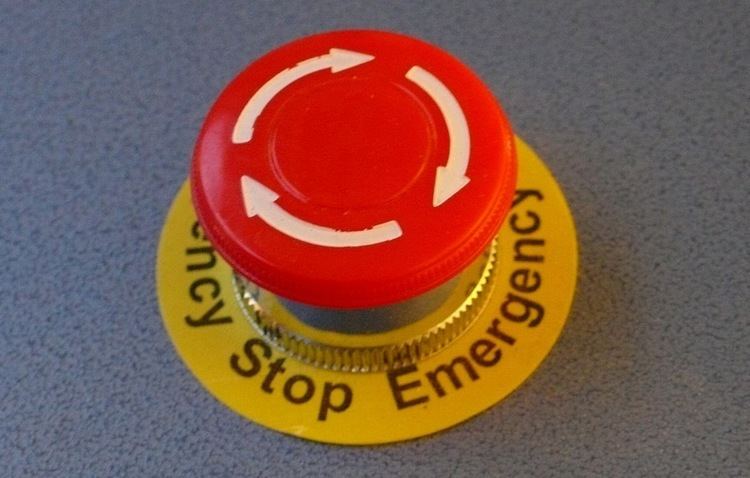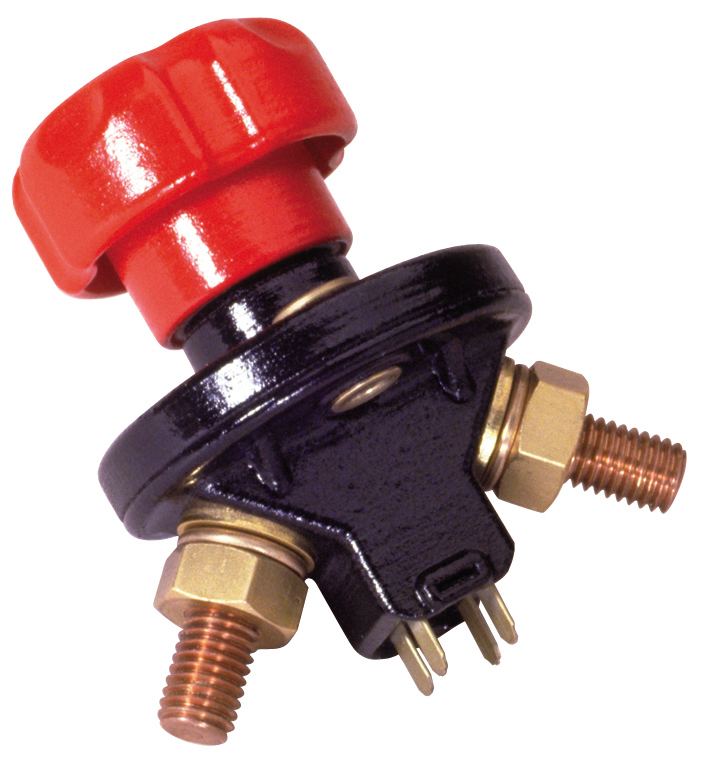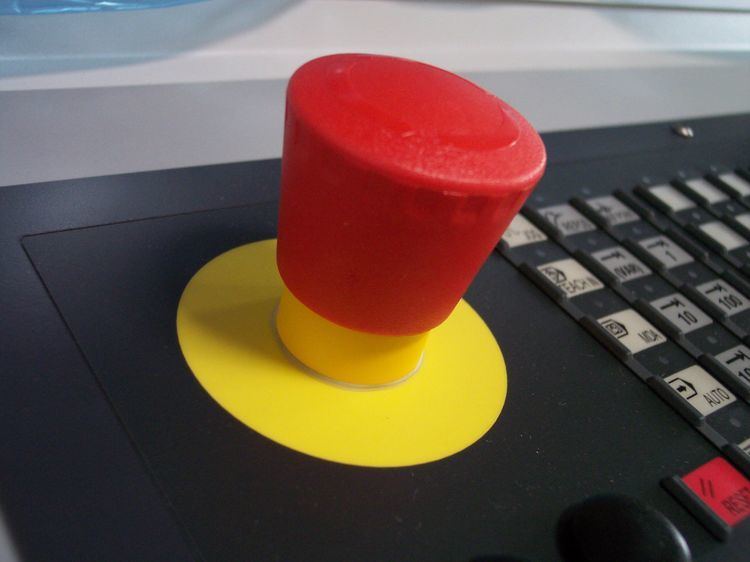Classification Mechanical component | ||
 | ||
Industry Automotive, boating, energy, engineering, entertainment Powered Some are mechanical and others are powered | ||
How to install kill switch in scooters honda activa 3g
A kill switch, also known as an emergency stop or e-stop, is a safety mechanism used to shut off a device or machinery in an emergency situation in which it cannot be shut down in the usual manner. Unlike a normal shut-down switch/procedure, which shuts down all systems in an orderly fashion and turns the machine off without damaging it, a kill switch is designed and configured to completely and as quickly as possible abort the operation (even if this damages equipment) and be operable in a manner that is quick and simple (so that even a panicking operator with impaired executive function or a bystander can activate it). Kill switches are usually designed so as to be obvious even to an untrained operator or a bystander.
Contents
- How to install kill switch in scooters honda activa 3g
- Applications
- Vehicles
- Pioneer era planes World War I aircraft
- Machinery
- Elevators and escalators
- Gym
- Amusement rides
- Software
- References

Many kill switches feature a removable barrier or other protection against accidental activation (e.g., a plastic cover that must be lifted or glass that must be broken). Such a removable barrier is commonly called a Mollyguard. Kill switches are featured especially often as part of mechanisms whose normal operation or foreseeable misuse may cause injury or death; designers who include such switches consider damage to or destruction of the mechanism to be an acceptable cost of preventing that injury or death.
Applications

A similar system, usually called a dead man's switch (for other names, see alternative names), as its name suggests, is a device intended to stop a machine (or activate one) if the human operator becomes incapacitated, and is a form of fail-safe. They are commonly used in industrial applications (e.g., locomotives, tower cranes, freight elevators) and consumer applications (e.g., lawn mowers, tractors, jet skis, outboard motors, snowblowers, motorcycles and snowmobiles). The switch in these cases is held by the user, and turns off the machine if they let go. Some riding lawnmowers have a kill switch in the seat which stops the engine and blade if the operator's weight is no longer on the seat.
Vehicles

On railways, an emergency stop is a full application of the brakes in order to bring a train to a stop as quickly as possible. This occurs either by a manual emergency stop activation, such as a button being pushed on the train to start the emergency stop, or on some trains automatically, when the train has passed a red signal or the driver has failed to respond to warnings to check that he/she is still alert, which is known as a dead man's switch. A similar mechanism is the watchdog timer.
In large ships, an emergency stop button pulls the countershaft for the fuel pumps to the stop position, cutting off the fuel supply and stopping the engines. With a controllable-pitch propeller, the stop button may declutch the engine from the propeller.
NASCAR (National Association for Stock Car Auto Racing) requires all their stock cars to be equipped with a steering wheel-mounted kill switch, in case the accelerator pedal sticks and the driver needs to shut down the engine.
Kill switches are also used on land vehicles as an anti-theft system and as an emergency power off. Such devices are often placed in bait cars and configured so that observing police can trigger the switch remotely.
A related concept is the dead man's switch, where the operator must be holding a button or lever any time the vehicle is operating. A common example of this would be the kill switches used by boaters wherein a cord connects the kill switch to the operator (usually by the operator's life jacket), and if the operator is thrown overboard in an accident, the cord will pull the switch and immediately shut down the vessel's engine. This prevents it from becoming a run-away vessel that could impose a danger to other vessels or swimmers at sea, and allows the operator to swim back to the vessel and re-board it. A similar device is featured on most lawnmowers: a lever on the handle blocks the engine's fuel supply and applies a brake to the blades as long as it is not held down.
Monster Truck Racing Association requires all of their monster trucks to be equipped with kill switches (either remote or in cab), in case the monster truck loses control and the driver needs to shut off the engine. Monster trucks' kill switches are tested before races.
Pioneer era planes & World War I aircraft
Early aviators using rotary engine-powered aircraft from the beginnings of their use in 1908, up through the end of World War I in 1918 had what could be called a reversed functionality version of the "dead man's switch" for cutting the ignition voltage to the spark plugs on such a powerplant, to give a degree of in-flight speed control for a rotary engine. This was often called a "blip switch" or "coupe switch" (from the French term coupez, or "cut") and when not being pressed, allowed the high voltage from the engine's magnetos to operate the ignition with normal engine operation in flight — pressing the "blip switch" cut the flow of high voltage from the magnetos, stopping the combustion process in the cylinders. When such a "blip switch" was intermittently used on landing approach, this allowed a limited degree of engine speed control, as rotary engines generally did not have a conventional throttle in their carburetors to regulate engine speed, but only for governing the fuel-air ratio for startup and full-speed operation.
Machinery
On large industrial machines, an emergency stop button is typically located on the panel, and possibly in several other areas of the machine. This provides a rapid means to disconnect the energy source of the device to protect workers. For fail-safe operation, the emergency stop button is a normally closed switch which ensures that a broken wire will neither accidentally activate the emergency stop nor prevent it from being activated. On machinery controlled by a Programmable Logic Controller, the emergency stop is designed in a way that it overrides the output of the controller.
In some contexts, such as nuclear reactors or data centers, the emergency stop is known as a scram switch.
In the European Union, most types of machinery are required to be equipped with an emergency stop according to the Directive 2006/42/EC. Exceptions apply for machinery in which an emergency stop would not lessen the risk as well as for portable hand-held/hand-guided machinery.
A kill switch is also used for gasoline pumps or any other device that pumps large amounts of explosive or flammable chemicals. Most vehicles nowadays also have a kill switch that cuts power to the fuel pump if the vehicle is overturned. There is commonly a single kill switch for all pumps at a pumping station. The kill switch is also used on such things as industrial band saws and belt sanders. Kill switches are also found on school-use electric powered tools such as drills and wood/metal lathes.
Elevators and escalators
Elevators often have a red two-way button on the control panel which is either marked "Emergency Stop" or "Run/Stop". Normally, the button is in the "up" or unpushed position, allowing the elevator to "run" in normal service. When the button is pushed, the elevator comes to an immediate stop. When the button is pulled back out, it resumes normal service, thus the reason for the use of the phrase "Run/Stop". Escalators will typically have a key-operated control that will turn the escalator off, or change its direction to up or down. Next to the key switch will be a red "Emergency Stop" button, which is used in the event of equipment failure, or where there is a potential for injury, such as when someone's shoe gets stuck in the "comb" at the top or bottom of the escalator and there is a risk of serious injury. The key switch is used to return the escalator to service after it has been stopped.
Gym
Treadmills often use a safety key (magnetic based) that the runner clips to his or her waist. The safety key is pulled out if the runner falls down, and the treadmill stops immediately. In other cases treadmills have a more traditional kill switch, often mounted towards the rear of one of the hand-railings.
Amusement rides
The emergency stop on an amusement ride is similar to that on industrial equipment. Typically brakes on a ride are designed to be disengaged when power is applied; disconnecting power will cause all brakes to engage. Most amusement rides have a computer that can, similar to the rail example provided above, engage the emergency stop when such a ride is determined to be out of operating specification.
Software
By analogy to physical kill switches, some software incorporates a mechanism by which its manufacturer or licensor can disable it, as when a maintenance fee has not been paid, or when a smartphone or other device has been lost or stolen.
